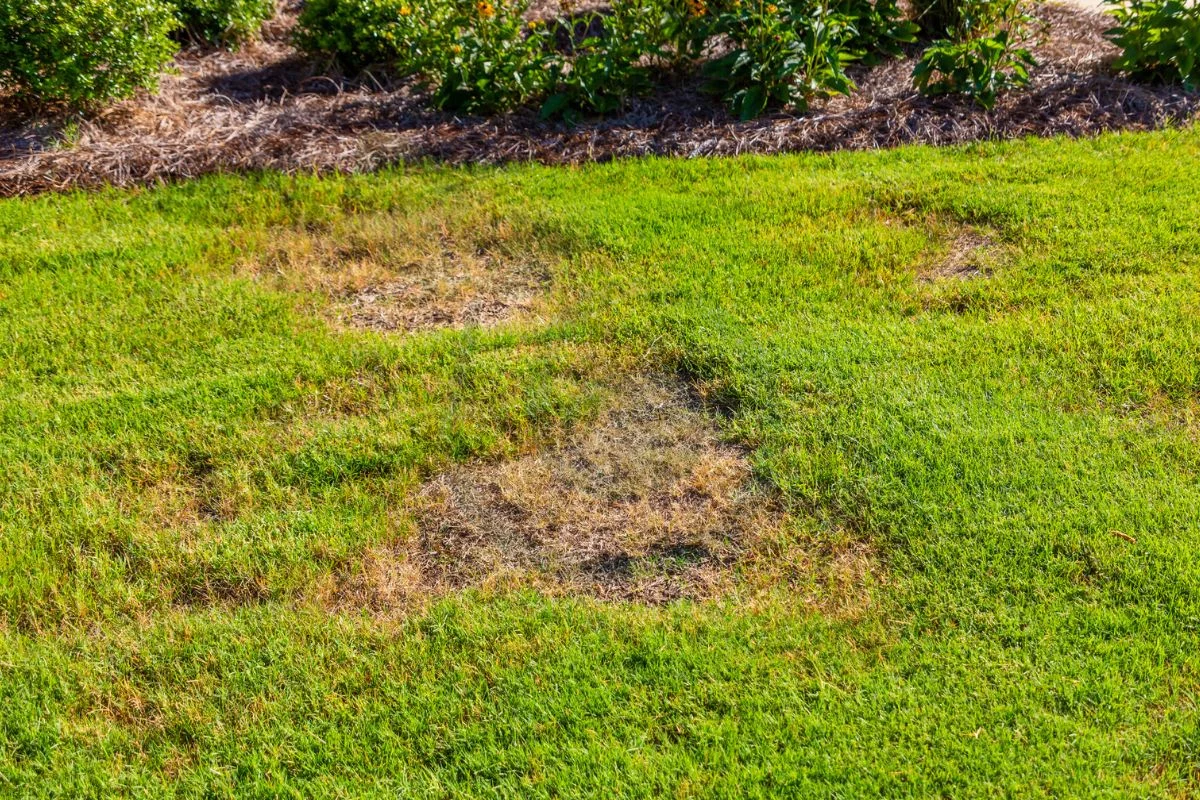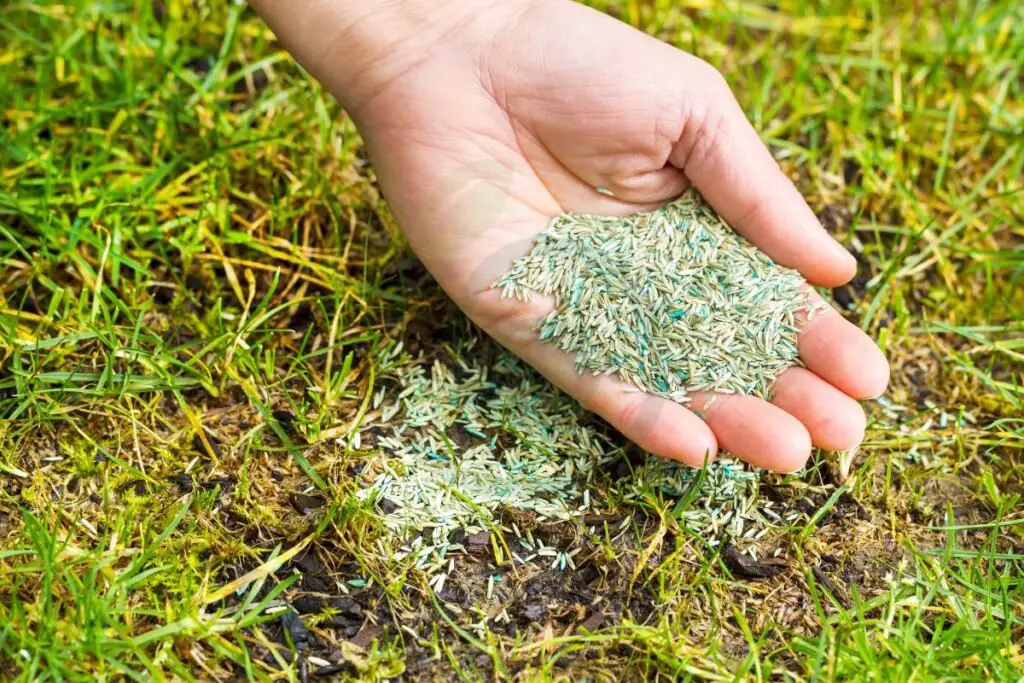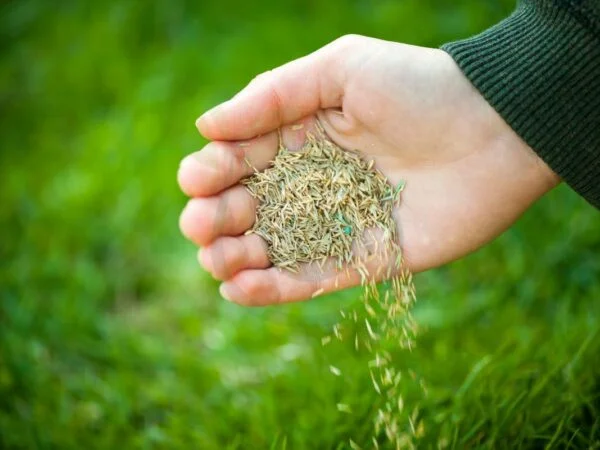
Finding the best grass seed for filling in bare spots is crucial. Whether you're dealing with patchy areas or looking to revitalize your yard, selecting the right grass seed can make all the difference. With a variety of options available on the market, understanding what works best for your specific preferences is key. By choosing high-quality grass seed tailored to your region's climate and soil conditions, you can effectively repair those unsightly bare patches and promote healthy growth throughout your lawn. Stay tuned as we delve into the top recommendations and tips for selecting the perfect grass seed to transform your yard into a green oasis.
Key Takeaways
- Choose the Right Grass Type: Select grass seeds that match your region's climate and sunlight conditions for optimal growth.
- Prepare Bare Spots Properly: Ensure to loosen the soil, remove debris, and add fertilizer before planting grass seeds in bare spots.
- Select Suitable Grass Seed: Pick high-quality grass seed blends or mixtures that are well-suited for repairing bare patches in your lawn.
- Plant with Care: Follow proper planting techniques such as seeding at the right depth, lightly covering the seeds, and gently watering the area.
- Maintain Adequate Watering: Keep new grass seeds consistently moist by watering lightly multiple times a day to aid in germination and growth.
- Monitor and Address Challenges: Be vigilant for issues like pests, weeds, or diseases and take prompt action to protect your growing grass.
Understanding Grass Types
Warm-Season Varieties
Bermuda grass thrives in hot climates due to its heat tolerance and drought resistance. Zoysia grass is another excellent choice for warm regions, known, for example, for its ability to withstand high temperatures. Bahia grass is a popular option that does well in warm environments, making it ideal for areas with scorching summers.
Cool-Season Options
Kentucky bluegrass, a variety of seed, is perfect for cooler climates, offering a lush and dense turf that can withstand cold temperatures. Fescue grass is a versatile choice suitable for regions with mild weather conditions, providing good resilience against varying temperatures. Fine fescue stands out for its exceptional cold resistance and shade tolerance, making it an excellent option for shady areas in cool climates.
Mixed Seed Benefits
A blend of different grass types in mixed seed provides year-round greenery, ensuring your lawn remains vibrant throughout the seasons. This mixture enhances the overall resilience of your lawn against changing weather conditions by combining the strengths of various grass species. Moreover, planting mixed seeds creates a visually appealing and diverse lawn that adds aesthetic value to your outdoor space.
Key Factors for Selection
Climate Consideration
Match the grass seed type with your local climate to ensure successful growth and maintenance. Consider temperature fluctuations throughout the year to select a grass variety that can thrive in all seasons. Ensure the chosen grass can withstand seasonal weather changes such as heatwaves or frost.
Soil Type
Analyzing soil drainage and composition is crucial before choosing grass seed. Select grass varieties that thrive in your specific soil type, whether it's sandy, loamy, or clayey soil. Amend soil pH if necessary to create an optimal environment for healthy grass growth.
Sunlight Exposure
Determine the amount of sunlight your lawn receives daily to make an informed choice of grass seed. Choose a grass variety that matches your lawn's sunlight requirements, whether it's full sun, partial shade, or full shade. Adjust planting locations based on sunlight availability to promote healthy and lush grass growth.
Preparing Bare Spots
Soil Preparation
Clear the bare spots of any debris or weeds to create a clean area for seeding. Loosen the soil using a rake or garden fork to enhance root penetration. Enhance soil quality by incorporating organic matter such as compost or peat moss.
Watering Techniques
Implement deep watering techniques to encourage roots to grow deeper into the soil. Water early in the morning when temperatures are cooler to reduce water loss through evaporation. Adjust your watering schedule based on weather conditions, ensuring that the grass receives adequate moisture.
Maintenance Tips
Regularly mow your lawn at the recommended height according to the type of grass you have planted in the patchy spots. Aerate the soil annually by perforating it with small holes to allow better air, water, and nutrient circulation. Keep an eye out for any signs of disease or pest infestations, and promptly address them to maintain a healthy lawn.
Grass Seed Options
Drought Tolerance
Select drought-tolerant grass varieties like Bermuda or Buffalo grass for water conservation efforts. These types are resilient to dry conditions and require less watering, aiding in sustainable lawn care practices. Implement proper watering techniques, such as deep but infrequent watering, to enhance the grass's drought resistance. By allowing the roots to grow deeper into the soil, the grass becomes more resilient during dry spells. Consider using mulch around newly seeded areas to retain soil moisture during extended periods without rain.
Planting Techniques

Correct Seeding
Plant the grass seeds at the recommended depth, typically around 1/4 to 1/2 inch deep. Ensure even distribution for optimal coverage. Follow the package instructions for the specific type of grass seed you are using.
For larger bare spots, consider overseeding by spreading an additional layer of grass seed over existing grass. This grass seed can help fill in gaps and promote a lush lawn appearance.
Timing Considerations
Choose the right time to plant your grass seeds based on the type of grass you are using. Cool-season grasses thrive when seed planted in early fall or early spring, while warm-season varieties do best when seed planted in late spring.
Avoid planting during extreme weather conditions such as excessive heat or cold, as this can hinder germination and growth. Consistent watering is crucial during the initial stages to support seed establishment.
Feeding New Seeds
After planting, provide proper nutrients to support healthy growth. Consider using a starter fertilizer specifically designed for new grass seeds. This can help kickstart growth and ensure strong root development.
Watering is essential after fertilizing to allow the nutrients to penetrate the soil and reach the seeds effectively. Avoid over-fertilizing as it can damage young plants and inhibit their growth potential.
Watering New Grass
Initial Watering
When watering new grass, it's crucial to ensure the entire lawn receives adequate moisture. After planting, water the area lightly every day to keep the soil moist. This helps seeds germinate and establish strong roots.
To prevent pooling or runoff, use a gentle spray nozzle and water in the morning. Avoid overwatering as it can lead to disease and weak growth. Once the grass reaches mowing height, gradually reduce watering frequency.
Ongoing Care
For new grass seed in bare spots, consistent watering is key for healthy growth. Monitor soil moisture regularly by checking a few inches below the surface. Adjust watering based on weather conditions to prevent under or overhydration.
Consider investing in a sprinkler system for efficient watering across your yard. Mulching can help retain moisture and reduce evaporation, especially during hot days. Regularly inspect your lawn for dry patches and adjust watering accordingly.
Dealing with Challenges
Weeds and Pests
Dealing with weeds and pests is crucial when trying to fill in bare spots with new grass seed. Weeds can compete for resources, hindering the growth of your desired grass. To tackle this issue, consider using a weed control product that targets common weeds without harming the new grass seed.
Another common challenge is pests that can damage both existing and newly planted grass. Look out for signs of pest infestation such as irregular patches of dead or dying grass. Implementing integrated pest management techniques, like using beneficial insects or natural predators, can help protect your lawn from destructive pests.
Grub Monitoring
Grubs are another nuisance that can wreak havoc on your lawn by feeding on grassroots, causing brown patches to appear. To monitor grub activity effectively, perform regular checks by lifting sections of turf to inspect for grubs underneath. If you notice an influx of grubs, consider applying a targeted grub control treatment to prevent further damage.
When managing bare spots in your lawn caused by factors like poor soil quality or heavy foot traffic, it's essential to address these issues before overseeding. Conduct a soil test to determine any deficiencies and amend the soil accordingly with organic matter or fertilizers to create an optimal environment for new grass seed germination.
Caring for Growing Grass
Regular Maintenance
To ensure healthy grass growth and promote seed germination, it's crucial to engage in regular maintenance practices. This involves watering the grass deeply but infrequently, typically once or twice a week. Overwatering can lead to shallow root systems and make the grass susceptible to diseases.
Applying fertilizer at the right times is essential for promoting lush and vibrant grass growth. Opt for a balanced fertilizer with equal parts nitrogen, phosphorus, and potassium. Regularly aerating the soil helps improve water absorption and nutrient uptake by the grass roots.
Mowing Tips
Remember that cutting too short can stress the grass and hinder its ability to thrive. Aim to mow frequently but only remove about one-third of the blade length each time. This encourages healthier growth and helps prevent weed invasion.
Adjust your mower blades according to the type of grass you have planted; for instance, Kentucky bluegrass should be kept at around 2-3 inches tall. Avoid mowing wet grass as it can lead to an uneven cut and potential damage to the turf.
Seasonal Lawn Care Guide
Spring Care
During spring, choosing the right grass seed is crucial for filling in bare spots on your lawn. Look for fast-growing varieties that can quickly establish and thrive in the warmer temperatures. Consider overseeding with a cool-season grass blend to achieve a lush and uniform lawn surface.
To promote healthy growth, ensure to water your lawn deeply but infrequently, allowing the roots to grow deeper into the soil. Applying a slow-release nitrogen fertilizer can provide essential nutrients for vigorous grass growth during this period.
Summer Maintenance
In summer, it's essential to continue monitoring and caring for your lawn to prevent bare spots from reappearing. Regularly mow your grass at the correct height based on the type of grass you have planted. Avoid cutting more than one-third of the blade length at once to maintain optimal health.
To combat dry spells and potential stress on your lawn, consider watering early in the morning or late in the evening when evaporation rates are lower. Applying a summer-specific fertilizer can also help replenish nutrients lost due to increased heat and activity on the lawn.
Fall Preparations
As fall approaches, preparing your lawn for cooler weather is key to ensuring its health through winter and into spring. Overseed any remaining bare spots with a high-quality grass seed suitable for autumn planting conditions. Choose a seed mix that contains varieties known for their cold tolerance.
Aerating your lawn in fall can help alleviate soil compaction and improve air circulation around grassroots, promoting healthier growth overall. Remember to adjust your mowing schedule as temperatures drop; gradually reduce mowing frequency as grass growth slows down heading into winter.
Final Remarks
You've learned about different grass types, how to select the best seed, preparing and planting it, and caring for your lawn. Now, armed with this knowledge, you can confidently tackle those bare spots in your yard. Remember, the key is consistency in watering and maintenance to ensure healthy grass growth. By following the seasonal care guide provided, you'll be on your way to a lush, green lawn in no time. Don't forget that challenges may arise, but with the right approach, you can overcome them and enjoy a beautiful lawn all year round.
Frequently Asked Questions
What are the key factors to consider when selecting grass seed for filling in bare spots?
When choosing grass seed for bare spots, consider factors like sunlight exposure, soil type, climate conditions, and foot traffic. Opt for a high-quality seed blend suitable for your specific lawn needs.
How should I prepare bare spots before planting new grass seed?
Prepare bare spots by removing debris and weeds, loosen the soil to improve aeration, add topsoil if needed, and ensure proper drainage. Rake the area smooth before seeding to create an ideal environment for new grass growth.
What are some common challenges when planting new grass seed in bare spots?
Common challenges include poor soil quality, inadequate watering or overwatering, weed competition, and pests. Address these challenges by testing your soil, following proper watering techniques, using weed control methods as needed, and monitoring for pests.
What are effective planting techniques for ensuring successful growth of new grass in bare spots?
Ensure good seed-to-soil contact by raking seeds lightly into the soil after spreading them evenly. Consider covering the seeded area with a thin layer of mulch to retain moisture. Water consistently but avoid saturating the soil to promote germination.
How can I care for growing grass in bare spots to encourage healthy development?
Regularly mow newly grown grass once it reaches about 3 inches tall. Fertilize appropriately based on your lawn's needs and monitor moisture levels closely. Avoid heavy foot traffic on newly established areas until the grass is well-established.
Image Source: Paid image from CANVA



